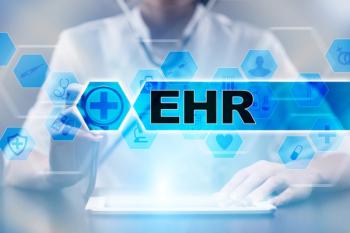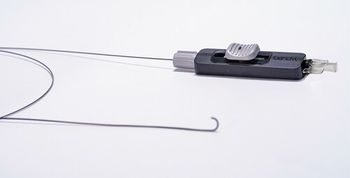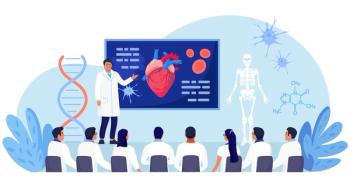
Transforming health care through connected technologies
Key Takeaways
- Connected care models, integrating wireless monitoring and remote data access, are transforming healthcare delivery, enhancing scalability and flexibility while reducing costs.
- Hospital-at-home programs and real-time monitoring improve patient outcomes, reduce complications, and lower costs by enabling care outside traditional settings.
Connected technologies revolutionize health care delivery, enhancing patient outcomes and efficiency through remote monitoring and integrated workflows in a post-pandemic world.
In the post-pandemic era, health care organizations are grappling with a complex set of challenges—from dwindling clinical staff and rising patient acuity to the economic strain of delivering more with significantly fewer resources. Persistent staffing shortages across nurses, technicians and physicians continue to burden hospitals, even as they’re expected to boost productivity and enhance patient outcomes—all within the high-stakes framework of value-based care.
This unprecedented reality has accelerated the adoption of connected care models. What initially emerged as a necessity during the COVID-19 crisis has now evolved into a permanent shift in health care delivery. Hospitals are reimagining where and how care happens—exploring centralized command centers for remote patient monitoring, investing in robust wireless infrastructure and expanding “hospital-at-home” programs that extend clinical care beyond traditional settings. Once considered a temporary workaround, the connected care model has proven its long-term value—and it’s here to stay.
The shift to connected care
Connected care represents a transformative evolution in healthcare delivery, integrating wireless patient monitoring, centralized telemetry and remote data access into a cohesive ecosystem that empowers clinicians across locations. Unlike traditional models that rely on dedicated infrastructure such as WMTS networks, today’s wireless monitoring systems harness existing hospital Wi-Fi—lowering installation costs while enhancing scalability and flexibility.
This shift is taking shape in a variety of ways. ICU-level care can now be distributed across facilities through centralized telemedicine programs (eICUs), while command centers enable real-time monitoring of non-critical patients who still require oversight. Physicians rotating between units or campuses can securely access real-time patient data on tablets or mobile devices—facilitating timely interventions and informed decisions from virtually anywhere.
One notable model gaining traction is hospital-at-home, which allows certain patients requiring hospital-level care to be treated safely within their own residences. Instead of discharging patients with limited follow-up or admitting those whose conditions are manageable remotely, hospitals can now deliver high-quality care outside traditional settings—reducing complications and lowering costs.
While adoption remains relatively modest, with roughly 20% of eligible health systems implementing the model, evolving reimbursement policies have made hospital-
Enhancing outcomes through real-time monitoring
Wireless telemetry has influenced patient care beyond the ICU, enabling clinicians to continuously monitor patients through compact, wearable devices—often no larger than a smartphone. This mobility-friendly approach has been associated with faster recovery times and fewer complications, as patients are encouraged to stay active while remaining under constant observation. For example, some hospitals now invite patients to walk through designated healing gardens, all while connected to live
These technologies have the potential to enhance clinical responsiveness. By detecting early signs of patient deterioration, clinicians can intervene before conditions escalate—improving outcomes and potentially avoiding ICU admissions.
Connected monitoring is also streamlining patient transfers. Now, wireless telemetry allows transport teams to manage transfers while patients remain continuously monitored, optimizing staffing efficiency without compromising care. UMass Memorial Medical Center, for example,
Reducing clinician burden and improving efficiency
In addition to clinical gains, connected care models are significantly easing the administrative burden on healthcare professionals. In many hospitals, routine documentation tasks still involve printing, scanning, emailing and manually uploading PDFs to electronic medical records—a process that can consume up to 15 minutes per task per patient. Today’s advanced systems simplify this workflow, allowing clinicians to upload files directly into a patient’s chart with just a few clicks, preserving documentation accuracy while reclaiming precious time.
This streamlining isn’t just a matter of convenience—it’s a strategic response to ongoing staffing shortages. By minimizing repetitive, time-consuming tasks, health care systems can better allocate resources, reduce clinician burnout and maintain high standards of care. Every minute saved on administrative work is a minute that can be reinvested in patient care.
A look ahead: Interoperability as the next leap
While device connectivity has progressed rapidly, the next major leap in connected care lies in data integration. Today, many systems still operate in isolation, producing streams of valuable information that are difficult to unify. This fragmentation leads to data overload for clinicians, who are often left to manually synthesize inputs from multiple sources.
The future hinges on interoperability—the ability for data from monitors, labs, imaging systems and more to flow into a single, standardized platform accessible across departments and facilities. This advancement would unlock real-time insights, enable predictive analytics and support earlier detection of adverse events, fundamentally improving both care quality and operational efficiency.
Much like how smartphones evolved from communication tools into indispensable hubs for everything from finance to wellness, hospital systems are poised for a similar transformation. Connectivity is no longer a luxury upgrade—it’s foundational to delivering care that is more personalized, efficient and resilient.
In conclusion, as health care systems continue to navigate mounting pressures and limited resources, connected technologies are no longer optional—they’re essential. Wireless monitoring, remote oversight and integrated workflows are reshaping how care is delivered, streamlining operations while driving better outcomes. As this transformation advances, interoperability will be the linchpin—empowering clinicians with timely insights, enhancing the patient experience and redefining the economics of care delivery for a smarter, more sustainable future.
Harsh Dharwad is President and CEO of Digital Health Solutions at Nihon Kohden, a global leader in connected patient monitoring, diagnostics and digital health innovation. Founded in Japan in 1951, Nihon Kohden is a pioneer in transformational healthcare technology and the largest supplier of electroencephalography products worldwide. Its solutions—including pulse oximetry, arrhythmia analysis, wireless patient monitoring and low-invasive blood volume monitoring—are used in more than 120 countries to advance precision, safety, and connectivity across the care continuum. Learn more at
Newsletter
Stay informed and empowered with Medical Economics enewsletter, delivering expert insights, financial strategies, practice management tips and technology trends — tailored for today’s physicians.















